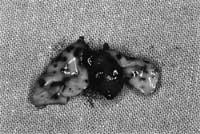Rays of light in the investigation of metastasis
2014/03/12 Kortabarria Olabarria, Beñardo - Elhuyar Zientzia Iturria: Elhuyar aldizkaria

After ten years of work, the team of researcher Joan Massagüé has discovered an essential mechanism in the metastasis of cancer cells. The results of the study were published in the specialized journal Cell, which explains how lung and breast cancers cause metastases in the brain. If this mechanism could be disabled, Joan Massagüé hopes to avoid metastasis and reduce cancer deaths. “The results are encouraging, but the goal is difficult and success is not guaranteed,” Massagüé acknowledges.
The Catalan researcher, who works at the Sloan Kettering in New York, has started working on the creation of antibodies that could deal with metastases. Then he wants to try with mice.
According to Joan Massagüé, metastasis is the cause of death in most cases of cancer. In many cases, initial tumors do not affect the upper organs, but do affect metastases. For this reason, the research team decided at the beginning of the century to put aside research on initial tumors and begin to investigate metastasis.
Speaking of his discovery, Massagüé affirms that it seems a general mechanism of colonization of the metastasis. It seems he wants to show in the coming months that the mechanism of metastasis that affects other types of tumors and other organs is the same. “If this were so,” says the Catalan, “we could develop specific drugs to combat metastasis.”
The fundamental part of the mechanism identified by the Massagüé group is the enzyme called plasmina, an enzyme that prevents blood clotting. In the brain, it also has a protective function against cancer cells that arrive through the blood. Researchers at the Sloan Kettering center have found that plasmon prevents the adhesion of cancer cells to the blood vessels and prevents the formation of new tumors and favors the self-destruction of tumor cells.
This mechanism is capable of destroying most cancer cells, but not all. These cells that are not destroyed recover their ability to attach to the blood vessels thanks to a molecule called L1CAM, which has adhesive properties. If any medicine were generated to block this molecule, the cancer cells would not adhere to the blood vessels again and could not form new tumors.
However, before starting to generate drugs, it is necessary to verify that the mechanism that causes metastases in the brain is the same as that which acts in other organs. If the hypothesis is verified, if demonstrated, in the following months, trials with mice will begin until they find a drug that is effective and has no serious side effects. “But without triumphalism, metastasis is a very complex mechanism,” warns Massagüé.

Gai honi buruzko eduki gehiago
Elhuyarrek garatutako teknologia





